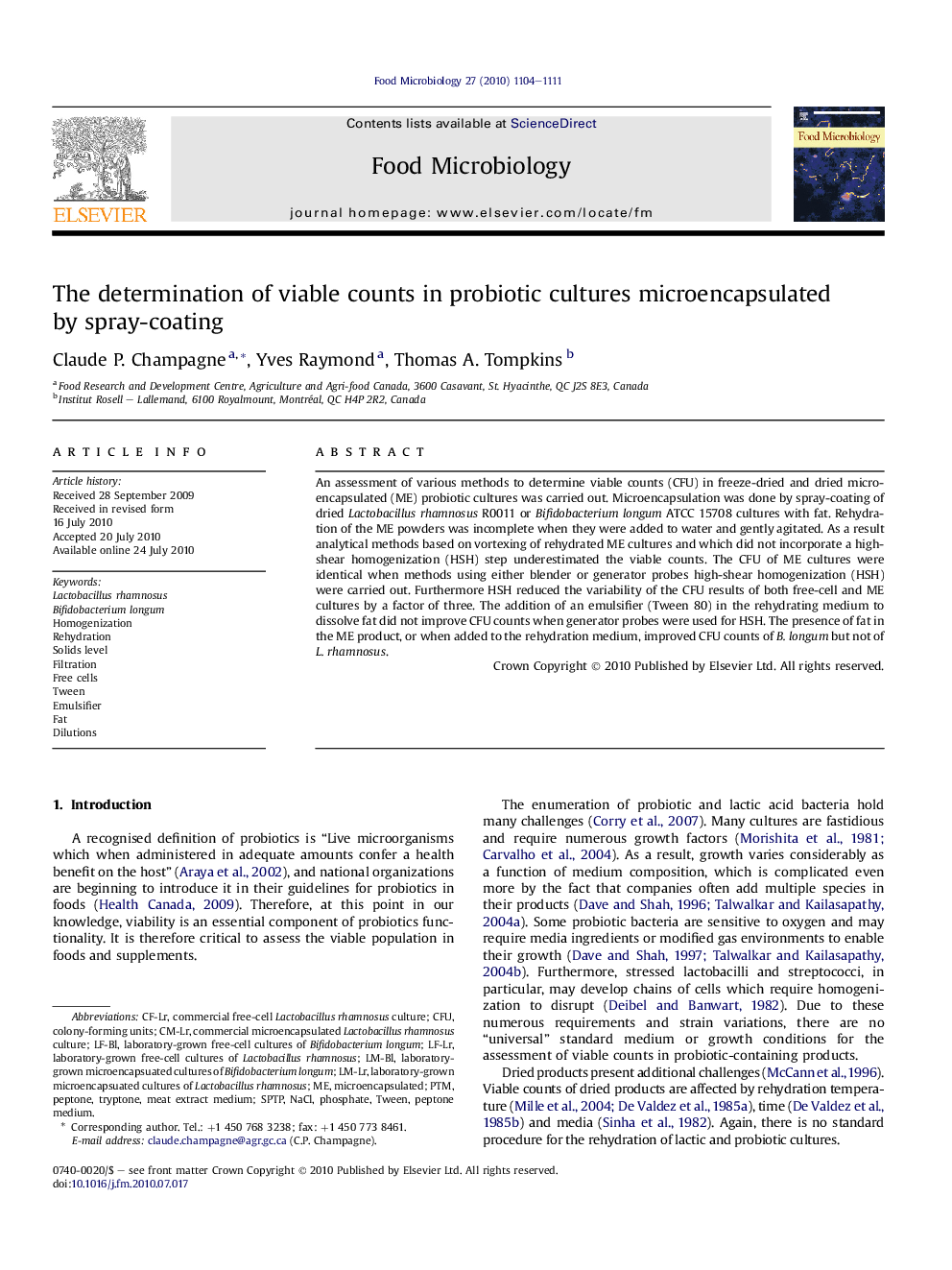| Article ID | Journal | Published Year | Pages | File Type |
|---|---|---|---|---|
| 4363354 | Food Microbiology | 2010 | 8 Pages |
An assessment of various methods to determine viable counts (CFU) in freeze-dried and dried microencapsulated (ME) probiotic cultures was carried out. Microencapsulation was done by spray-coating of dried Lactobacillus rhamnosus R0011 or Bifidobacterium longum ATCC 15708 cultures with fat. Rehydration of the ME powders was incomplete when they were added to water and gently agitated. As a result analytical methods based on vortexing of rehydrated ME cultures and which did not incorporate a high-shear homogenization (HSH) step underestimated the viable counts. The CFU of ME cultures were identical when methods using either blender or generator probes high-shear homogenization (HSH) were carried out. Furthermore HSH reduced the variability of the CFU results of both free-cell and ME cultures by a factor of three. The addition of an emulsifier (Tween 80) in the rehydrating medium to dissolve fat did not improve CFU counts when generator probes were used for HSH. The presence of fat in the ME product, or when added to the rehydration medium, improved CFU counts of B. longum but not of L. rhamnosus.
